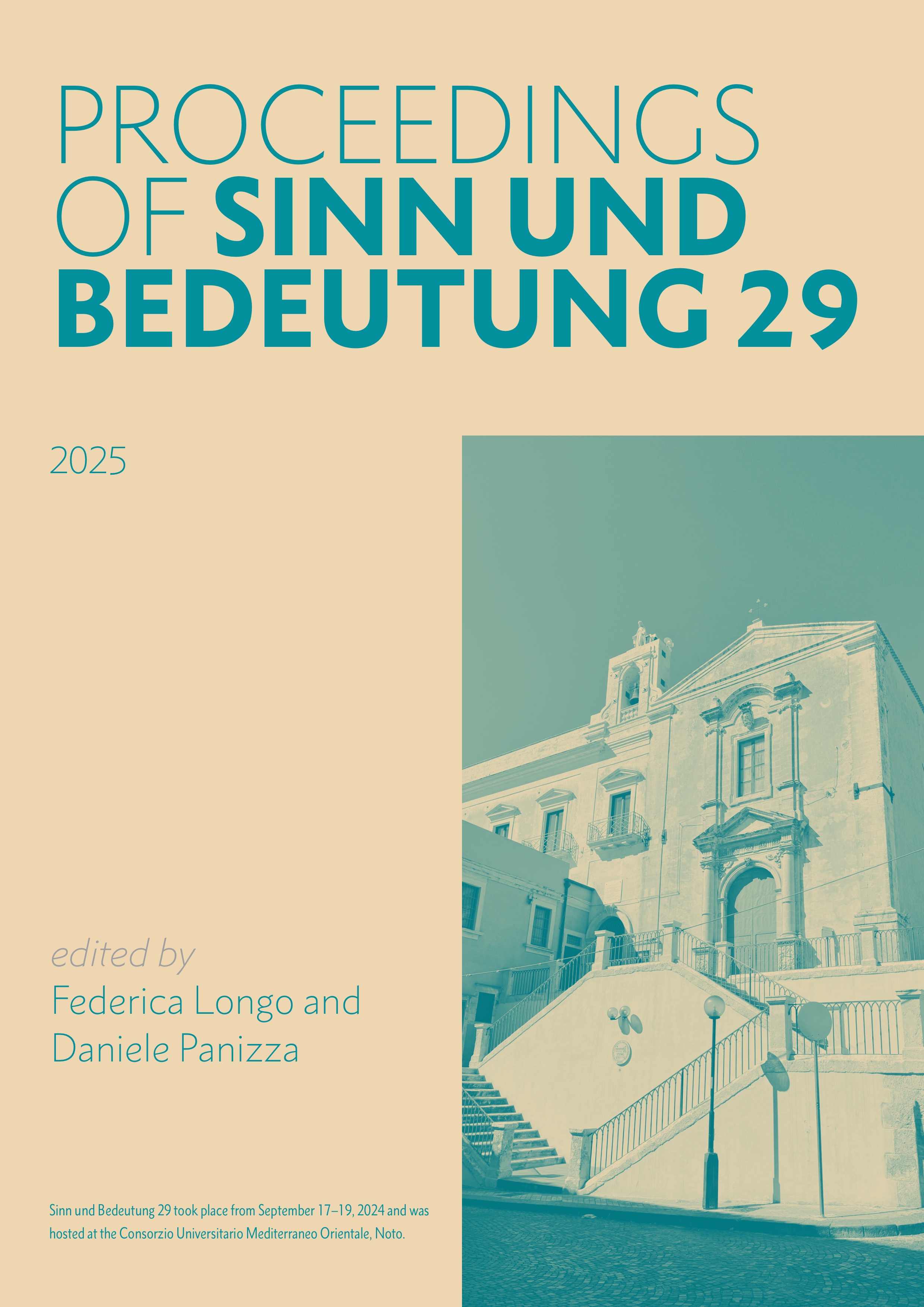The role of incompatible disjuncts in the acquisition of disjunction
DOI:
https://doi.org/10.18148/sub/2025.v29.1198Abstract
Prior studies on disjunctive utterances involving compatible disjuncts (i.e., where replacing the disjunction or with and would not lead to contradiction) have found that, while adults interpret disjunctive sentences such as The mouse carried either an apple or an orange exclusively (‘only one, not both’), children often interpret them inclusively (‘one, or both’) or conjunctively (‘both, not just one’) (see, for instance, Singh et al., 2016, Tieu et al., 2017 and Bleotu et al., 2024b). Recent studies based on child corpora and experiments with adults suggest that exclusive interpretations are more likely when the two disjuncts in question are incompatible with one another (Jasbi et al., 2018, 2022; Felton and Jasbi, 2025). Building on this observation, our study employed a covered box task to investigate monolingual Romanian five-year-olds’ and adults’ interpretation of disjunctive utterances involving the complex disjunction fie. . . fie ‘either. . . or’ with compatible versus incompatible disjuncts (e.g., The squirrel was either at the top or at the bottom of the tree). We aimed to investigate whether incompatibility would lead to a decrease in Romanian-speaking children’s conjunctive and inclusive interpretations of disjunction. While some children showed conjunctive interpretations for compatible cases, all patterned with adults on incompatible ones. Their adult-like responses to incompatible disjunctions highlight the role of pragmatic and lexical cues in the early acquisition of disjunction. We discuss the theoretical implications of our findings, arguing that the source of exclusivity may be pragmatic or lexical.Downloads
Published
2025-09-22
How to Cite
Bleotu, A. C., Bîlbîie, G., Nicolae, A. C., Panaitescu, M., Benz, A., & Tieu, L. (2025). The role of incompatible disjuncts in the acquisition of disjunction. Proceedings of Sinn Und Bedeutung, 29, 129–143. https://doi.org/10.18148/sub/2025.v29.1198
Issue
Section
Articles
License
Copyright (c) 2025 Adina Camelia Bleotu, Gabriela Bîlbîie, Andreea C. Nicolae, Mara Panaitescu, Anton Benz, Lyn Tieu

This work is licensed under a Creative Commons Attribution 4.0 International License.
https://creativecommons.org/licenses/by/4.0/
